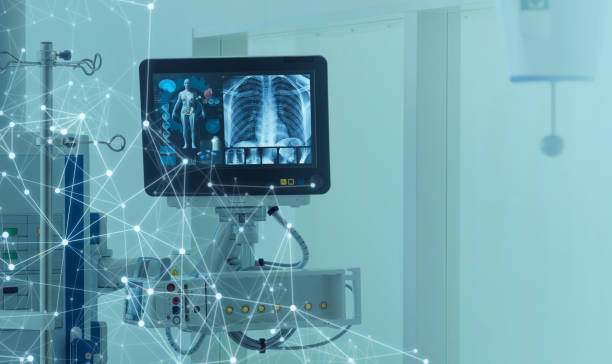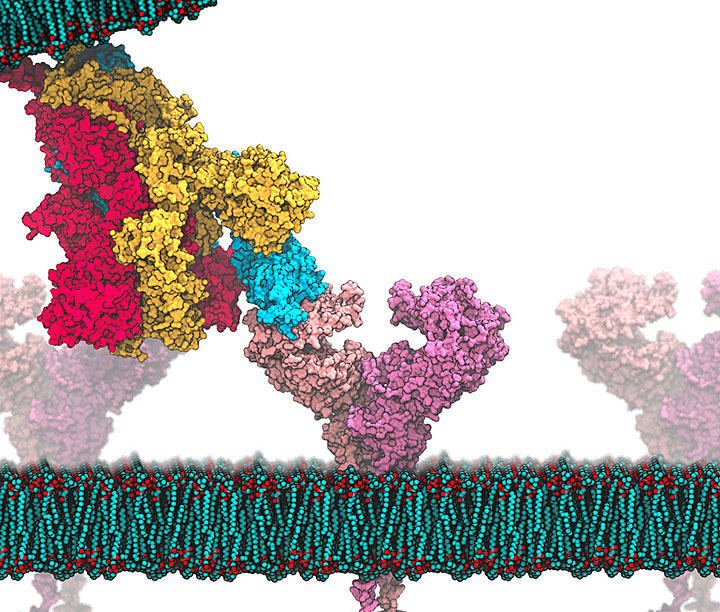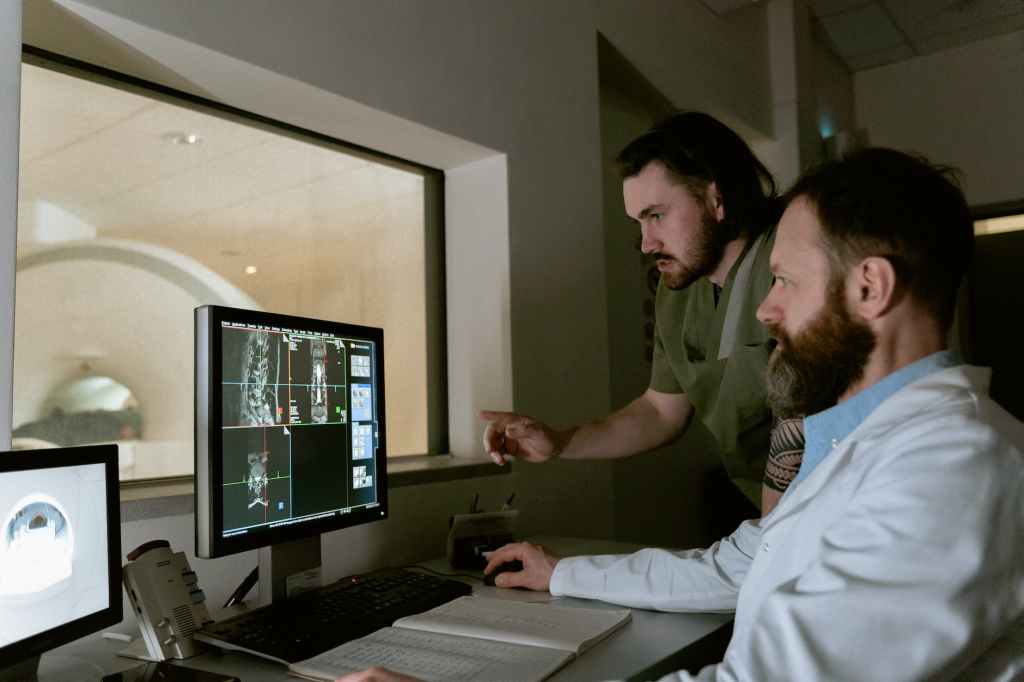Artificial intelligence (AI) has captured the imagination of the public with dreams of someday matching general human intelligence. However, today’s AI systems are narrow AI, focused on excelling at specific tasks like playing chess or identifying images. While not as flashy as artificial general intelligence (AGI), narrow AI is already providing immense value across many industries, especially healthcare. In this post, we’ll explore some of the most promising applications of narrow AI that are transforming medicine.
AI-Assisted Diagnosis
One of the most active areas of AI in healthcare is applying machine learning to improve disease diagnosis. AI systems can be trained on vast datasets of medical images, lab results, and patient data to identify patterns that can assist doctors in making accurate diagnoses.For example, funnel-chest is a condition where the breastbone sinks into the chest, which can lead to heart and lung problems. Analyzing X-rays to quantify this condition used to be time-consuming manual work. But researchers at Google Health trained an AI model on hundreds of funnel-chest X-rays. This AI system can now automatically identify the condition, measure its severity, and generate a report for physicians in seconds rather than hours [1].AI imaging analysis is also making headway in detecting cancer. CureMetrix developed cmTriage, an AI model focused on reading mammograms to identify early signs of breast cancer. In reader studies, cmTriage boosted the accuracy of breast cancer detection by 8-12% compared to analysis by radiologists alone [2]. AI is also being applied to CT scans, MRIs, and other medical imaging data to improve cancer screening.Beyond imaging, AI systems can integrate diverse patient data – demographics, family history, laboratory tests, clinical notes, and more – to provide doctors with ranked lists of most likely diagnoses. These AI assistants can direct attention to conditions a physician might have overlooked or reinforce their suspicions, enabling faster and more accurate diagnostic decisions.

AI-Guided Treatment Plans
Once a diagnosis is made, AI tools can further assist doctors by recommending treatments personalized to each patient’s condition and medical history.For instance, researchers at Moffitt Cancer Center developed an AI system called Oncotecture that creates tailored radiation therapy plans for individual cancer patients. By analyzing data from hundreds of past treatment plans, Oncotecture learned complex tradeoffs between targeting tumors efficiently while preserving as much healthy tissue as possible. Compared to human-designed plans, Oncotecture-generated plans provide equivalent or better tumor control while reducing radiation exposure to nearby organs by up to 10% [3].AI can account for even more data to guide therapy, like genetics, labs, and clinical trial outcomes. Such personalized recommendations can improve treatment effectiveness, reduce complications, and avoid costly clinical trial and error. Systems like Oncotecture demonstrate the enormous potential of narrow AI to enhance precision medicine.
Accelerating Drug Discovery
It takes over a decade and costs up to $2.6 billion on average to bring a new drug to market [4]. AI promises to shorten drug development timelines and reduce costs through more efficient screening, design, and pre-clinical testing of drug candidates.For example, Atomwise has used deep learning models trained on databases of molecular structures and associated pharmacological properties. These AI models can predict how different compounds will interact with target proteins and disease pathways. Atomwise claims their AI drug discovery platform can screen up to 10 million molecules per day, enabling massively expanded search spaces for promising therapeutic candidates compared to manual techniques [5].
AI can also design completely new molecules predicted to bind to specific drug targets. Exscientia used this approach to create novel molecules to block adenosine receptors implicated in inflammation. Their AI design was assessed to be ready for clinical trials in just 12 months, whereas traditional manual drug discovery takes 2 to 4 years [6].
AI’s potential to accelerate drug discovery was demonstrated on the grandest scale during the COVID-19 pandemic. Researchers urgently needed to identify vaccine candidates against the novel coronavirus. Companies like Moderna and Pfizer/BioNTech utilized AI to design vaccine antigens and rapidly screen large numbers of drug formulations for immunogenicity and safety. By combining narrow AI with rapid manufacturing techniques, remarkably safe and effective COVID vaccines were developed in record time, less than a year as opposed to the typical decade-long process. While the pandemic response was not free of controversies, the success highlights AI’s immense value in responding quickly during medical crises and developing life-saving vaccines at previously unthinkable speeds.

Democratizing Healthcare with AI
In addition to assisting clinicians, narrow AI applications are expanding access to medical expertise. AI-powered chatbots provide interactive first-line health advice without an appointment. Smartphone apps employ computer vision to diagnose skin conditions or analyze mole photos for melanoma risk. Babylon Health is one pioneering company looking to make healthcare more accessible via AI. Their app offers free AI-powered symptom checking and health advice. For a subscription fee, patients get 24/7 online access to video consultations with doctors and specialists. Babylon’s AI chatbot can gather initial details about symptoms, screen for critical issues, and recommend appropriate care [8]. Such AI applications help address shortages of doctors in rural/underserved regions and reduce barriers to mobilizing healthcare systems. Apps like Babylon also promise more convenient care optimized for consumer lifestyles. Although not a panacea, democratizing narrow AI tools represent a major step towards equitable global healthcare.The Future is Bright for AI in MedicineNarrow AI has already demonstrated enormous potential to augment clinicians and improve patient outcomes in areas like diagnosis, treatment, drug discovery, and increasing healthcare access. And experts predict the medical AI market is poised for massive growth, with some estimates projecting it to surpass $50 billion by 2026 [9]. But AI in healthcare remains in its early stages. Challenges around accessing quality training data, dealing with bias, and building stakeholder trust must still be overcome. Nonetheless, rapid technical advances are unlocking ever more exciting applications of narrow AI in medicine.

In the near future, we may see AI systems that continuously monitor patients to detect early disease signals or adverse drug reactions. Perhaps doctors will be equipped with augmented reality glasses that overlay AI-generated analytics onto the real-time patient view. And new AI drug discovery methods could yield breakthrough treatments for previously untreatable diseases.
Please let me know what you think about these upcoming changes in the comments below! Thanks for reading! #CoderKittens



Leave a comment